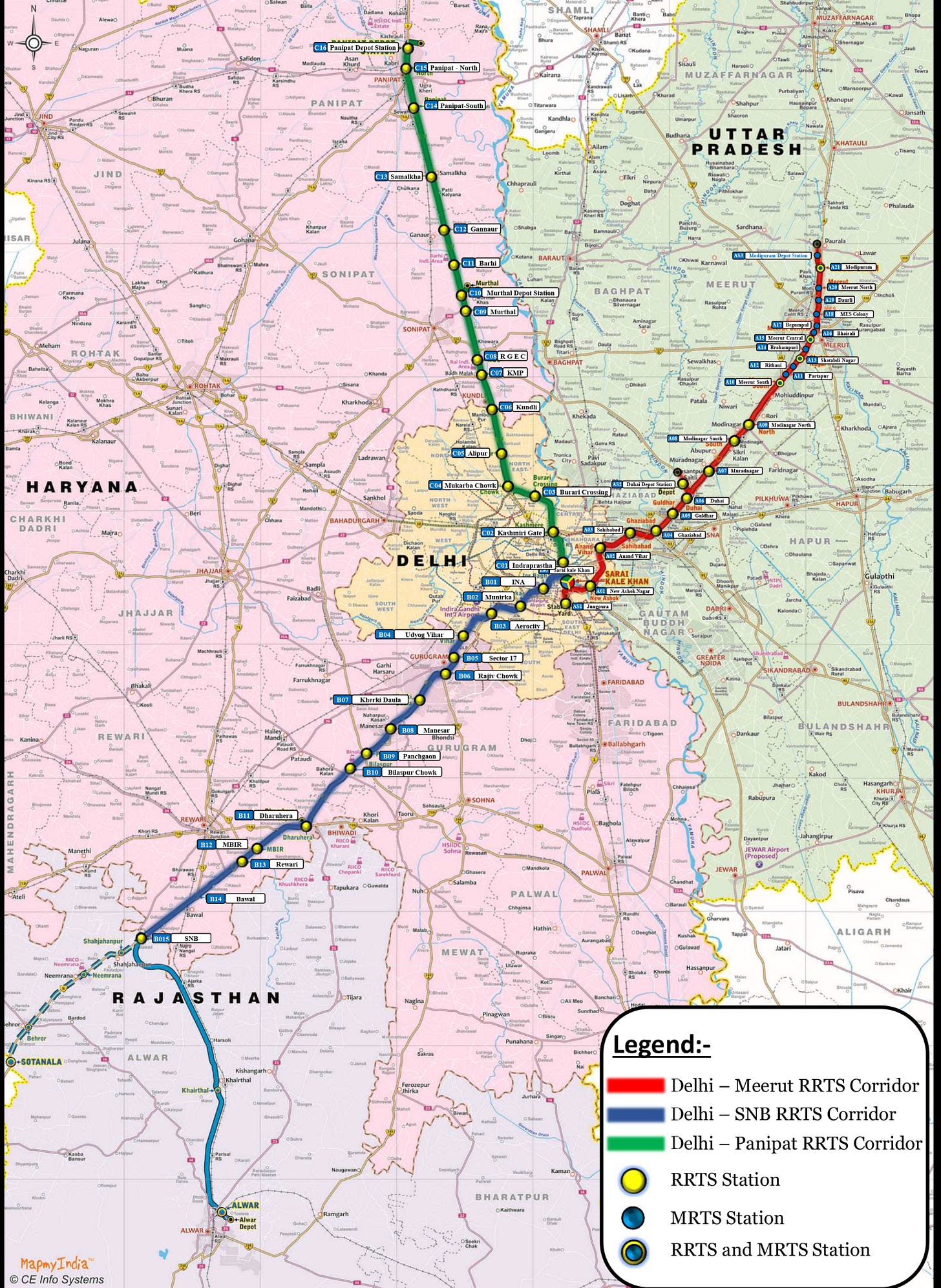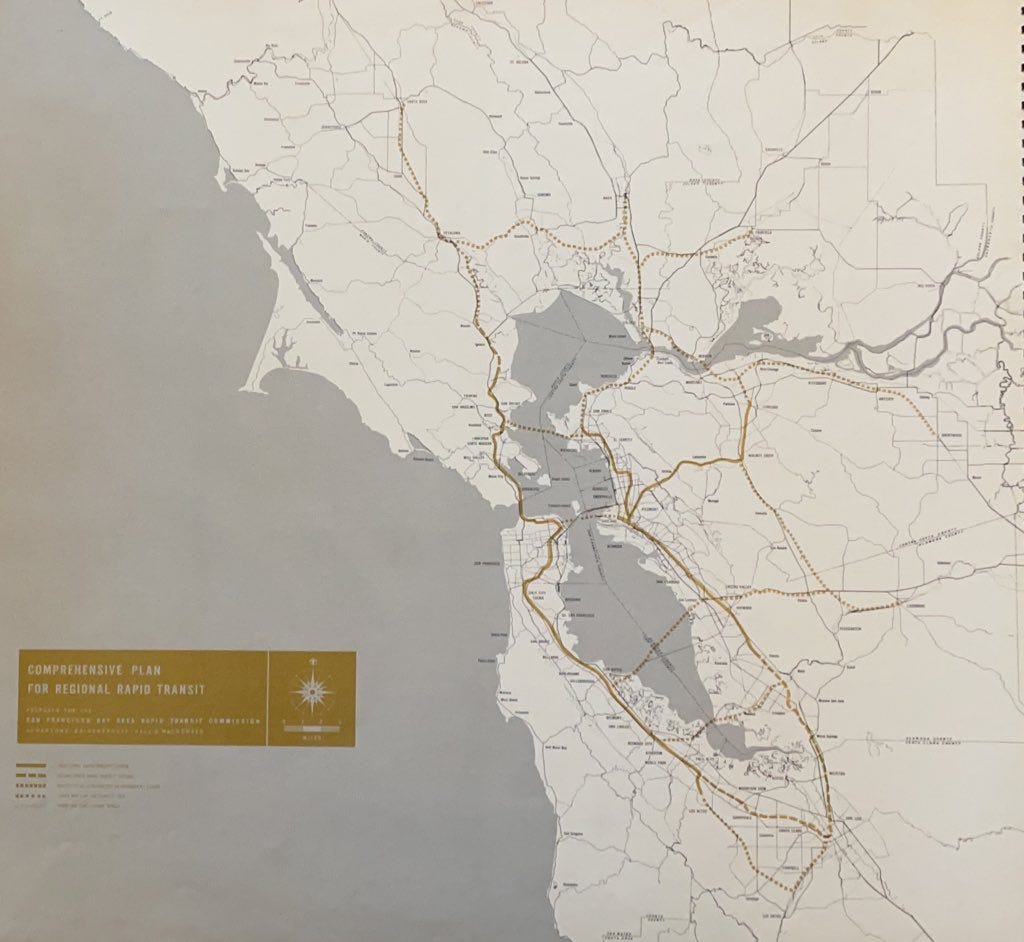The Rise of Rapid Regional Rail
Why the US should invest in new suburban high speed rail
Traditionally, urban rail transit comes in two flavors: you have rapid transit systems, or metros, and then there is commuter rail, or suburban commuter rails.
Typically, rapid transit is grade separated from other uses, often underground (though sometimes elevated), with frequent stop spacing. The lines typically converge in a central business district, though often meeting at distinct points to allow interchange between urban corridors. Think the MTA in New York City or the German U-Bahn. These systems facilitate commuting and tourist trips within dense urban areas.
Suburban rail systems, as the name suggests, serve the suburban towns and hinterlands around major cities. They are sometimes not grade separated, and often run alongside or share tracks with other rail lines, with larger stop spacing. The best run systems fan out from suburban areas and concentrate in a urban core, where they provide rapid transit-like services, and fanning out again on the other side of the city. ie, they use through-running of rail operations. Think New Jersey Transit or Metro North in the New York area (though these lines don’t through-run), or the German S-Bahn. There are other nuances and complications here (ie, China has largely avoided traditional suburban rail, instead choosing to run metro lines at longer lengths into suburban areas) but I think this is broadly reasonable summary.
This post describes an exciting new layer of rail services for urban areas, what I’ll call rapid regional rail. This is primarily taking off in Europe and Asia, though it would be ideal if we could get it to work in the US.
What is Rapid Regional Rail?
Rapid regional rail is basically an extension of commuter rail services to towns and regions even more far-flung from the urban core. They typically feature substantially faster trains (max speeds of at least 140 km/hr or 87 mi/hr), with fewer stops across much greater distances (75-100km); across a mix of above and underground routes. The function is to reduce the length of commutes into urban areas to greatly expand the travelsheds around cities and increase their effective size.
We can see this in one of the first rapid regional rail systems — the Réseau Express Régional (RER) in Paris. RER A for instance is an east-to-west line stitching together suburbs far to the east and west of Paris along a 109 km line, serving over 1.2 million passenger trips a day. Other lines are even longer — 172 km for the D line and 187 km for the C line, with speeds reaching 140 km/hr. Like metro lines, these converge in a triangle at the city, which helps to avoid overcrowding any one station.
Why Rapid Regional Rail
So why does it matter? Well, cities have always grown in conjunction with the availability of transportation options. The growth of subways and metros boosted the population of major cities like London or New York in the 19th and early 20th centuries. Adding highways and suburban rail further grew cities into metropolitan areas, with the now distinctive core-suburban separation, especially after WWII.
Rapid regional rail basically helps cities scale in the next transition: towards even larger megapolis regions with huge populations over large scales. City sizes around the world have hit new dimensions in both physical size as well as population. The economic agglomerative forces of having this many people live in the same area and participate in common job markets, dating markets, etc. can therefore boost idea generation and economic output.
Connecting many people in the same area can also relieve housing pressure on the center urban areas — by dramatically expanding the set of houses that lie within a normal commuting distance to the urban core to include the peripheral towns at greater distances from cities.
It’s for this reason we are now seeing rapid regional rail systems take off in the rest of the world.
The New Wave of Rapid Regional Rail Systems
One example of the new rapid regional rail is Crossrail in London, which provides rapid commuter rail coverage — connecting two major east-to-west mainline train lines — with a rapid transit metro link in the middle (Elizabeth line). The line carries over 200m annual rides, many of which are “new” to the entire transit system.
There is another line in Istanbul: M34 or HızRay (Fast Rail), which is about to start construction and would connect 13 stations across a 75 km length around the Istanbul area with 140 km/hr trains.
In Copenhagen/Malmö you have the Öresund Metro — a plan which would link Copenhagen and Malmö with a driverless metro line with a top speed of 120km.
But the area where you are really seeing rapid regional rail take off is in Asia.
Seoul is a good example of this new system, with the first (A) section already opened. This line currently stretches 82km across 11 stations, with speeds reaching 180km/hr. The goal is to hit even far-flung townships like Dongtan which is already a fast-growing master-planned community. Building out multiple of these GTX lines, so it is hoped, can decongest some of the pressures on the center area of Seoul, while retaining and even adding to the overall agglomerative economies of the metro.
In Delhi, there is the Regional Rapid Transit System (RRTS) in the National Capital Region around Delhi. Delhi’s metropolitan area has something like 28 million people, and this would further expand the metropolitan area through three proposed lines. Cities like Meerut (~1.8m people, 82km away) would be connected with a commute time of an hour, which would make this second tier of peripheral cities commutable to the NCR and so connected through labor markets. Guangzhou has also proposed a high-speed metro line (up to 160km/hr). I’m sure there are many other lines I’m missing, but this at least gives you a sense of the rapid regional rail boom across the world.
Why America Needs Rapid Regional Rail
Okay that’s all well and good for Korea; but what’s the relevance for America? Isn’t America already notoriously auto-focused in its transit choices? I think there are three reasons why America is actually a good location for these rail services:
Remote and hybrid work has led to a further wave of suburban and exurban sprawl. Free from the need to come into the office every day, workers have been more willing to move to the far suburban and exurban fringes of cities, and commute in more irregularly. This pushes out the effective commuting window of workers further out beyond traditional transit networks, and into the next set of cities, which could instead be met by a new wave of transit networks reaching into these areas.
American cities face an affordability crisis. It would be great if we could respond to housing shortages in cities like New York by building more — and I hope we do. But the single easiest way to increase the number of affordable housing units near metros is to build additional transit links. This will bring existing cheap housing units directly into the commuting shed of metros — thereby dramatically expanding the number of cheap housing units commutable to major job centers.
Auto focused commuting faces inherent capacity constraints and externalities. As more people are driving into urban cores from further away — that places necessary strain on car-centered infrastructure. Even if that doesn’t mean that suburbs are literally unsustainable, we could likely reach much higher throughput with fewer externalities like vehicle emissions by relying more on rail solutions.
With that in mind, here are a few sample crayons which illustrate what rapid regional rail could look like in the NYC, LA, and Bay Area metro areas:
We haven’t yet touched on the cost. Most of the other countries discussed here have been able to construct rapid regional rail services at an affordable price, making them positive NPV investments.
The same would likely not apply to new rail investments in the US: it simply costs too much to build in the US, and it is far too difficult to address local NIMBY opposition, to get any of these projects off the ground. Which is a shame! Because rapid regional rail seems to be taking off around the world — and it would be great for that to happen in the US as well.
[Edit:] Since I wrote the post, I found these plans for a “regional rapid transit” system in the Bay Area from 1955, with travel time projections and projections of large population increases in the area. Really illustrates the far-sightedness of planners back in that era, and how everything ground to a halt in the 1970s as NIMBYs/downzoning/end to transportation construction.











